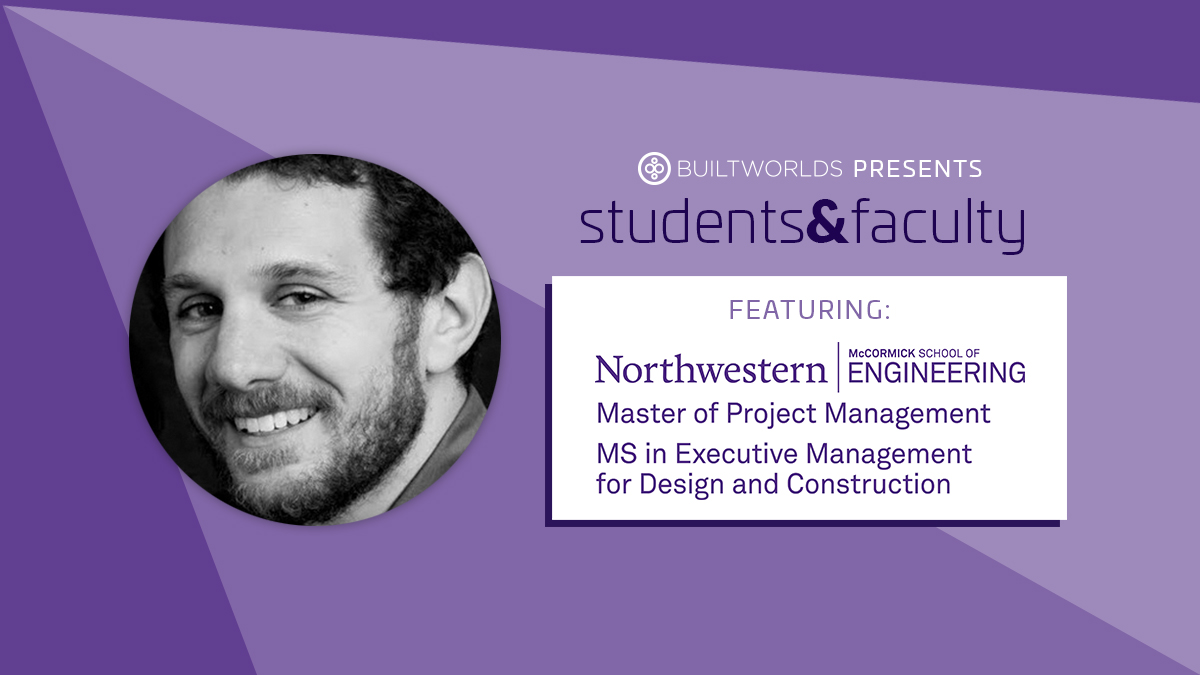
As we progress through our careers, we often contemplate seeking additional education, exploring new training programs, or pursuing specific certifications to help us advance. BuiltWorlds had the opportunity to discuss career paths and the decision to return to Northwestern University’s MS in Executive Management for Design and Construction (EMDC) program – and eventually become a faculty member – with Damon Ranieri, the current Building Information Modeling (BIM) Integration Manager for Lendlease (US, Chicago office) Project Management & Construction.
Why did you go back to school for the program?
I spent the early part of my career on the design side of the AEC industry. As a technologist, I knew the biggest ROI was going to be more on the build side of the fence. In order to build my skill set, build my network, and ready myself for more senior opportunities, I knew I needed something like the EMDC program.
Were you employed full-time when you did the program?
Yes; I was actually running my own consulting business at the time. The program was extremely vital to my success. I hadn’t run my own operation in the past, and the classes were so specific to my core business functions, I was able to apply the material from class right away.
Did the program help improve your position at your company or help you find a higher position in another company?
Both the material and the reputation of Northwestern afforded me in-roads to Lendlease. The fact that I had recently studied executive management material gave the hiring managers confidence that I’d be able to succeed as a people manager, even though I had never had direct reports before. The fact I was enrolled in class work that was specifically geared toward commercial construction eased their minds about hiring someone with lots of design side experience, but limited construction experience.
How has attending the program helped the company you work for?
It isn’t uncommon for ambitious people in my industry to go back to graduate school for an MBA to further their careers. Even the best MBA programs are general in nature. EMDC is essentially the equivalent to most MBA programs, but tailored specifically to future AEC leaders.
After graduating from the program, you returned to teach as a member of the faculty. What do you teach?
I teach Computer-Integrated Project Delivery (PROJ_MGT 455), often referred to as “Northwestern’s BIM/ VDC Class.”
Why do you teach?
Altruistically speaking, I love seeing the enthusiasm from these super talented young people, especially when you start to see them connect the dots. I teach the class from the perspective of which technologies you would apply at each stage of the project. From such a vantage point, you can start to see how and where the material from other coursework they have taken (or are taking) fits into the overall process.
For myself, it gives me a playground for kicking the tires on new technologies from virtual reality to facilities management solutions. Of course, whenever you attempt to teach someone else something, you are forced to break it down into its elements, giving you a greater understanding of the concept yourself.
Why should someone attend the program?
The approach we take in both the MPM and EMDC programs is from a vantage point of drawing practical, in-field experience into the classroom or lab. The Computer-Integrated Project Delivery class is a great example of that. The class is based around designing and developing a final group project, facing many of the same challenges teams in the real world face.
What sort of students do you look forward to teaching and who should apply to the program?
I love working with students who have worked for some amount of time in the field. In the beginning, by approaching a program how they have always approached it — and when they are shown how some piece of VDC technology can help them — you’ll hear them say, “oh man, I wish we had known about this on our last project!” From there, their energy is palpable.


Discussion
Be the first to leave a comment.
You must be a member of the BuiltWorlds community to join the discussion.